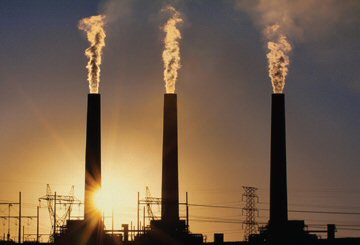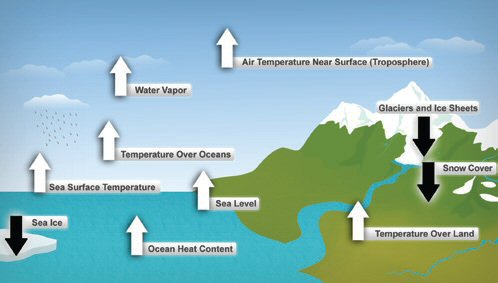LENRs: The Good News About Climate Change
 May 7, 2014 – By Steven B. Krivit –
May 7, 2014 – By Steven B. Krivit –
On May 6, the U.S. Global Change Research Program released its Third National Climate Assessment, a comprehensive report on climate change and its impact in the United States. The news is not good.
But the good news is that interest in the potential of greenhouse-gas-free low-energy nuclear reaction-based energy alternatives will grow.
All indicators suggest that LENRs may offer a radiation- and emission-free nuclear energy source, pending further development and effective scale-up. As the price for pollution caused by carbon-based energy sources goes up, and as social awareness rises, so too will investment in LENRs. Click here to learn more about LENRs.
[DAP errMsgTemplate=”” isLoggedIn=”N”]
Login or Subscribe to remove this notice
Professional Journalism – LENR Facts
Original online content only at New Energy Times
[/DAP]
As the report shows, the effects of climate change are here, they are pervasive and they are causing major devastation.
The U.S. Global Change Research Program began in 1989 as a presidential initiative, and this is its third report. Readers can download copies of the summary or the full report at this Web site.
Excerpt from the overview of the report:
Over recent decades, climate science has advanced significantly. Increased scrutiny has led to increased certainty that we are now seeing impacts associated with human-induced climate change. With each passing year, the accumulating evidence further expands our understanding and extends the record of observed trends in temperature, precipitation, sea level, ice mass, and many other variables recorded by a variety of measuring systems and analyzed by independent research groups from around the world. It is notable that, as these data records have grown longer and climate models have become more comprehensive, earlier predictions have been largely confirmed. The only real surprises have been that some changes, such as sea-level rise and Arctic sea ice decline, have outpaced projections.
What is new over the last decade is that we know with increasing certainty that climate change is happening now. While scientists continue to refine projections of the future, observations unequivocally show that climate is changing and that the warming of the past 50 years results primarily from human-induced emissions of heat-trapping gases. These emissions come mainly from burning coal, oil, and gas, with additional contributions from forest clearing and some agricultural practices.
Global climate is projected to continue to change over this century and beyond, but there is still time to act to limit the amount of change and the extent of damaging impacts.
The New York Times summarized the effects:
The effects of human-induced climate change are being felt in every corner of the United States, scientists reported Tuesday, with water growing scarcer in dry regions, torrential rains increasing in wet regions, heat waves becoming more common and more severe, wildfires growing worse, and forests dying under assault from heat-loving insects.”
The report s that all the indicators of climate change that are expected to increase in a warming world are increasing and all the indicators expected to decrease in a warming world are decreasing. They include the following:

Sea Ice (Decreasing)
Sea Surface Temperature (Increasing)
Temperature Over Oceans (Increasing)
Water Vapor (Increasing)
Ocean Heat Content (Increasing)
Sea Level (Increasing)
Air Temperature Near Surface (Troposphere) (Increasing)
Glaciers and Ice Sheets (Decreasing)
Snow Cover (Decreasing)
Temperature Over Land (Increasing)
The London Financial Times, in its article on the report, had this to say:
This week’s U.S. climate change report underlines the growing price Americans are paying at home. The report shows that average U.S. temperatures have risen by almost 2 degrees centigrade since 1895, with most of it taking place over the past four decades. The incidence of drought, big hurricanes and unusually heavy rainfall has soared.
So too has the price of dealing with the consequences. It cost more than $60 billion to clean up after Hurricane Sandy in 2012 – a storm that nearly submerged large tracts of New York City. Now the U.S. is spending billions more to upgrade its tidal barriers. Meanwhile, the cost of water in the drought-prone southwest keeps rising.
Yet Washington still refuses to act on the principle that prevention is cheaper than cure. Part of its reluctance comes from the boiling frog syndrome. Most Americans accept that global warming is happening. Yet they chafe when confronted with the higher bills they would have to pay to avert it. In a recent Gallup poll, voters ranked tackling climate change last out of 15 priorities.
The U.S. Global Change Research Program signals a wake-up call for Americans. Not only have our energy choices contributed to the devastation of the earth, but our short-term thinking and failure to plan for the future is on track with disaster. In a span of 300 years, inhabitants of the earth will have consumed most of the fossil fuel riches that took 3 million years to form. Despite claims from the alternative-energy sector, no known alternative energy sources are economical and available in sufficient capacity to replace our current dependency on fossil fuels.
Questions? Comments? Submit a Letter to the Editor.

